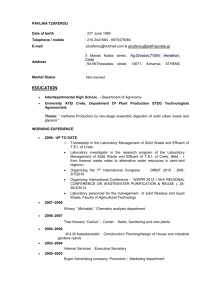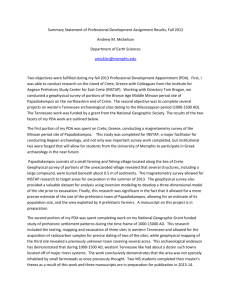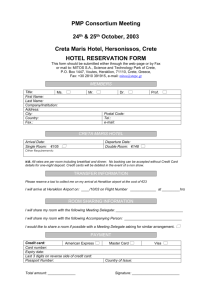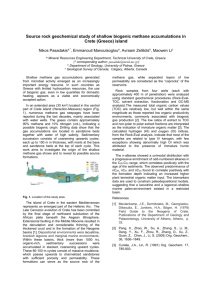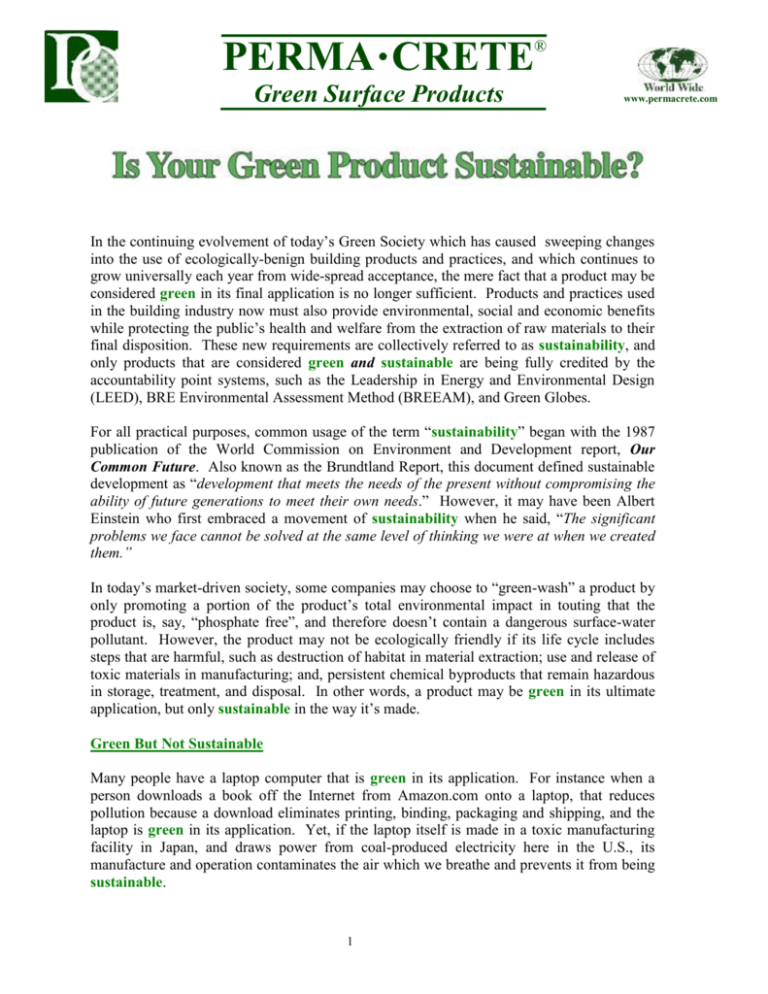
®
PERMA ● CRETE
Green Surface Products
www.permacrete.com
In the continuing evolvement of today’s Green Society which has caused sweeping changes
into the use of ecologically-benign building products and practices, and which continues to
grow universally each year from wide-spread acceptance, the mere fact that a product may be
considered green in its final application is no longer sufficient. Products and practices used
in the building industry now must also provide environmental, social and economic benefits
while protecting the public’s health and welfare from the extraction of raw materials to their
final disposition. These new requirements are collectively referred to as sustainability, and
only products that are considered green and sustainable are being fully credited by the
accountability point systems, such as the Leadership in Energy and Environmental Design
(LEED), BRE Environmental Assessment Method (BREEAM), and Green Globes.
For all practical purposes, common usage of the term “sustainability” began with the 1987
publication of the World Commission on Environment and Development report, Our
Common Future. Also known as the Brundtland Report, this document defined sustainable
development as “development that meets the needs of the present without compromising the
ability of future generations to meet their own needs.” However, it may have been Albert
Einstein who first embraced a movement of sustainability when he said, “The significant
problems we face cannot be solved at the same level of thinking we were at when we created
them.”
In today’s market-driven society, some companies may choose to “green-wash” a product by
only promoting a portion of the product’s total environmental impact in touting that the
product is, say, “phosphate free”, and therefore doesn’t contain a dangerous surface-water
pollutant. However, the product may not be ecologically friendly if its life cycle includes
steps that are harmful, such as destruction of habitat in material extraction; use and release of
toxic materials in manufacturing; and, persistent chemical byproducts that remain hazardous
in storage, treatment, and disposal. In other words, a product may be green in its ultimate
application, but only sustainable in the way it’s made.
Green But Not Sustainable
Many people have a laptop computer that is green in its application. For instance when a
person downloads a book off the Internet from Amazon.com onto a laptop, that reduces
pollution because a download eliminates printing, binding, packaging and shipping, and the
laptop is green in its application. Yet, if the laptop itself is made in a toxic manufacturing
facility in Japan, and draws power from coal-produced electricity here in the U.S., its
manufacture and operation contaminates the air which we breathe and prevents it from being
sustainable.
1
In restorative construction, a chemical-resistant urethane used to provide a non-porous
surface finish to protect and enhance an existing warehouse floor, as well as contribute to less
maintenance and less repair, allow the urethane to have green characteristics. However, if
it’s made with hazardous chemicals and the manufacturing process is poisonous, or it emits
toxic fumes during its application posing health risks to the installers, it’s not sustainable.
Sustainable Design & Green Engineering
In a continuing effort to reduce overall energy consumption throughout the country, most
industries now embrace the concept of sustainable development. Architects and building
designers are implementing “whole building” design strategies to create high-performance
buildings from an ecological standpoint. Because operating a building over time is far more
energy intensive than developing it, demand for durability and energy performance has
become paramount in project planning.
Recognizing that U.S. buildings use nearly 10 percent of the world’s energy, and also use
three times more energy than comparable buildings in similar climates in Europe, the U.S.
government is adopting green building programs, and an increasing number of states are
offering tax benefits for green public buildings. The U.S. government defines green
buildings as those that demonstrate the efficient use of energy, water and essential materials;
limit impact on the outdoor environment; and, provide a healthier indoor environment.
Projects are required to reduce waste, adapt to the site, use renewable energy and materials
from local sources, creatively seek synergies from all building and site components, and,
above all, avoid toxic materials, protect ecosystems and restore damaged surroundings. As a
result, all of this has created vast new markets for green building materials, and green
building practices, i.e., sustainability.
The LEED Green Building Rating System was conceived and implemented by the United
States Green Building Council (USGBC) to define and measure the sustainability of “green
buildings.” Since the introduction of Version 2.0 in March 2000, the LEED rating system
has radically transformed building design and construction by awarding points for its
evaluation in five separate categories that reduce the negative impact of buildings. The
greater the point total, the more sustainable the project. Importantly, LEED does not certify
products. Only projects can be LEED certified with a maximum of 69, and a minimum of 26
points required for certification.
LEED Point Categories
1)
2)
3)
4)
5)
Sustainable Site Planning
Water Efficiency & Conservation
Renewable Energy & Efficiency
Materials & Resources Conservation
Indoor Environmental Quality
PERMA●CRETE® & Cement
The primary and most widely-used portion of the extensive PERMA●CRETE® product line
continues to be its high-early strength, cementitious Matrix Mix bag mixes which are
2
polymer-modified to provide remarkable compressive, tensile and flexural strengths along
with superb surface-bonding capability. As a result, a PERMA●CRETE® surface provides
a new architectural, load-bearing surface of unusual strength and flexibility.
PERMA●CRETE® has sold over one million, 40 lb. bags of its Matrix Mix products to
PERMA●CRETE® Dealers worldwide, and the key ingredient in the composition and
manufacture of these products has been cement, thousands of tons of cement, which is a very
sustainable/green building product. Cement is a fine grey or white powder that is a key
ingredient in concrete production, and typically comprises 10 to 12 percent of the entire
concrete mixture. When cement is mixed with water (or waterbase polymers), sand and
gravel, it turns into concrete. When PERMA●CRETE®’s Matrix Mix is mixed with its
liquid Bonding Additive, it becomes polymer concrete.
The durability of concrete is a significant, sustainable attribute because it will not rust, rot,
or burn, requiring less energy and resources over time to repair or replace. Structures built
with concrete have optimal energy efficiency not found in other building materials like steel
or wood. Additionally, concrete is easy to use, incurs little waste, and can be optimally
recycled. As the most widely used building material in the world, concrete structures have
withstood the test of time for more than 2,000 years.
Cement Products: Green & Sustainable
The cement industry utilizes industrial byproducts like fly ash, and consumes less energy
than its competitors. Fly ash is a byproduct of coal-fired power plants that is difficult to use
because of inconsistent grind and weight, and because it contains some radioactivity; massive
amounts of fly ash are unused and go to landfills for disposal. However, a ton of fly ash used
in concrete can save almost a ton of carbon-dioxide (CO2) emissions from entering the
atmosphere and contributing to global warming. In 2005, more than 20.5 million metric tons
of fly ash were used in concrete, and 3 million metric tons of recycled slag, a byproduct of
steel production, were used saving millions of tons of CO2 from entering the air we breathe.
CO2 results from the combustion of carbon-based fuels, i.e., the burning of oil, natural gas or
coal, and raw material changes occurring from intense heat, which is the conversion of
carbonates in the raw materials into the various compounds which give cement its unique
properties. However, most cement manufacturers are now closing wet process kilns that
require large amounts of water and energy to grind raw materials, and installing energy
efficient dry process plants which use energy-rich alternative fuels that are consumer wastes
or byproducts from other industries. This type of energy recovery conserves valuable fossil
fuels for future generations while safely destroying wastes that would otherwise be deposited
in landfills.
Although the U.S. is the world’s third largest manufacturer of cement, the U.S. Department
of Energy statistics show that U.S. cement production accounts for just 0.33 percent (about
1/3 of 1%) of energy consumption in the U.S. – lower than petroleum refining at 6.5 percent,
steel production at 1.8 percent, and wood production at 0.5 percent. The greatest
consumption of energy comes from the homes and buildings we live and work in at 38.8% of
total U.S. consumption, and the cars and trucks we drive at 27.6%.
Since 1975, the cement industry has improved energy efficiency by thirty-three (33%)
percent. Today, the cement industry accounts for less than 2% of all U.S. carbon
dioxide (CO2) emissions, well below other national sources such as electric power plants
at 33%, transportation at 27%, and industrial operations at 19%.
3
Specifically designed and delivered for each project, concrete typically produces very little
waste. The major ingredients in concrete, cement, sand and coarse aggregates, are typically
obtained and manufactured locally, reducing shipping impacts and benefiting the local
economy. When a concrete structure has served its purpose, it can be crushed for use as
aggregate in new concrete or as base materials for roads, sidewalks and concrete slabs. Even
the reinforcing steel in concrete (which is often made from recycled materials) can be
recycled and reused. In 2006, the Construction Materials Recycling Association estimated
that approximately 125 to 140 tons of concrete are recycled each year.
Further still, the cement industry uses about 65 million scrap tires, or over 20 percent of the
total amount of scrap tires each year, as an alternative fuel source during cement production.
Pound for pound, tires contain 1/3 more energy than coal. Recycling tires in this way
effectively removes them from landfills or other disposal methods.
Finally, structures built with concrete have optimal energy performance. Homes and
buildings constructed with insulated concrete walls are not subject to large daily temperature
fluctuations. This means home or building owners can lower heating and cooling bills up to
twenty-five (25%) percent. Also, heating, ventilating and air-conditioning systems can be
designed with smaller capacity equipment. High performance insulated concrete wall
systems provide high R-value and thermal mass with low air infiltration to provide superior
thermal efficiency.
The manufacture of cement and its ultimate use in concrete is an outstanding example of
sustainable design and green engineering for environmentally sound construction as it
reduces waste, reduces carbon emissions, and increasingly uses new sources of renewable
energy.
PERMA•CRETE® Products: Green & Sustainable
Product ingredients, uses and finished applications of PERMA●CRETE® all contribute to
the green and sustainable characteristics of PERMA●CRETE® products. One of the most
critical standards in determining their green factor is the Volatile Organic Compounds
(VOCs) “toxic out-gassing” emitted by the products as they’re installed, as well as the
amount of time needed for the installed products to finish any continued out-gassing. All
cementitious PERMA●CRETE® surfaces, installed in all types of both vertical and
horizontal applications, including residential and commercial buildings, sidewalks, garage
decks, highway bridges and airport runways, have zero VOCs.
Even after PERMA●CRETE®’s final acrylic, epoxy or urethane sealer application, each of
which have less than 10 g/l VOCs and barely register on the Environmental Protection
Agency’s (EPA) established, national VOC limit of 450 g/l (grams per liter), one hundred
percent of all out-gassing in the completed sealer application occurs in less than three days.
Other green characteristics of PERMA●CRETE® products and finished applications that,
when incorporated within a LEED candidate’s overall project scope, will qualify for LEED
points, are listed below:
Reducing urban heat island on parking lots and roofs. PERMA●CRETE® surfaces
are 20 degrees cooler than even light-colored concrete, which in itself reflects solar
energy and reduces heat gain.
4
PERMA●CRETE® products are manufactured in Nashville, Tennessee, and are
within 500 miles of over 75% of the U.S. population, thereby qualifying for the LEED
regional materials credit on a sizeable portion of U.S. building projects.
Refurbishing old or damaged floors; providing low maintenance and treatment to
protect floors; and, creating decorative floors for aesthetic benefits.
Seamless, vertical-surface systems improve indoor air quality because reduced air
infiltration minimizes moist air penetration.
Seamless, vertical-surface systems increase energy efficiency by minimizing thermal
breaks resulting in improved insulation efficiency.
Durability; low, toxic-free maintenance; and, easy, economical repair, all qualify for
the LEED projected life cycle costs credit.
With the exception of green and sustainable Matrix Mixes, all PERMA•CRETE® products
are either waterbase (made with water in the formulation), or waterbourne (made with
materials compatible with water), being virtually VOC-free, environmentally safe, friendly to
use, and sustainably manufactured with renewable resources that are sustainably
harvested.
For instance, all water used to make PERMA•CRETE® products is obtained from a 1,000
foot deep well on the PERMA•CRETE® manufacturing site, eliminating the costly energy
required to obtain, purify and deliver normal city water. Also, PERMA●CRETE®
eliminates sewer wastes and the resultant energy-dependent, processing and retrieval costs
by utilizing all water obtained for the manufacture of the products. PERMA•CRETE® uses
renewable resources and energy-efficient manufacturing processes to achieve sustainable
design.
Completed installations of PERMA•CRETE® products result in reduced energy costs and
produce no harmful effects to the environment or the air we breathe. PERMA•CRETE®
exterior surfaces over buildings, sidewalks, driveways and other areas remain attractive,
durable and functional with low, occasional maintenance costs using normal household
cleaning supplies even after nearly twenty years of continual consumer use. Interior
surfaces on walls and floors using PERMA•CRETE® can produce wall and floor gloss
levels with high reflectance that can reduce lighting costs by up to 40%, and provide surfaces
that are more abrasion-resistant and long-lasting than conventional surfaces of drywall,
carpet, vinyl tile, and quarry tile. All of these PERMA●CRETE® characteristics are green
in their applications.
With higher energy prices, new homes now have a tighter seal that results in trapped
moisture inside walls and living spaces, and higher humidity for mold and fungus to feed on
cellulose, the primary ingredient in paper and wood on walls and floors. Importantly, there is
no food source in PERMA•CRETE®’s green surfaces to support these expensive and
unwanted problems, nor from other damaging but also common occurrences resulting from
termites, rot and rodents.
During the past several years, the PERMA●CRETE® research center has continued to
reformulate and reduce all product VOC levels without compromising or affecting the
intrinsic performance characteristics of each product. Additionally, PERMA●CRETE® has
also created many new, environmentally-safe products for additional surface installation
features to expand its Dealers’ capabilities for green building projects.
5
For instance, PERMA●CRETE® is nearing completion of a new interior wall, basecoat
Matrix Mix that, when directly applied over Insulated Concrete Form (ICF) interior walls or
other wall surfaces, will provide a thermal barrier that will limit the average temperature rise
of the unexposed surface to not more than 250 F after 15 minutes of fire exposure, a longstanding code requirement for safety. This will allow the normal PERMA●CRETE® surface
application to then be applied, and eliminate the very costly procedures of installing studs,
drywall, finishing and painting on these interior wall surfaces. This new PERMA●CRETE®
product application will be significantly green and can earn LEED points in, potentially,
several categories.
The exterior and interior surface installations of PERMA●CRETE® products, for both
vertical and horizontal applications, provide outstanding examples of sustainable design and
green engineering for environmentally sound construction in extending the life of, and
reducing the environmental impact of new and existing buildings, maximizing a building’s
energy efficiency, and improving indoor environmental quality, while at the same time
providing products that have been manufactured in a sustainable manner.
Our planet consists of a finite support system, and our air, water, food, soil, and ecosystems
are not infinitely expandable in their ability to absorb mankind’s willful excesses and
disregard for conservation. PERMA●CRETE® will continue to contribute its corporate
share in creating a better and safer, green world for all of us to live in.
Article by George A. Henderson, President, CEO, Quality Systems, Inc. ©All Rights Reserved 2008
Research Sources:
Concrete Home Building Council
NAHB Green Building Program
U.S. Green Building Council (USGBC)
LEED Reference Guide (LEED)
Portland Cement Association (PCA)
Concrete Construction Magazine
Sustainable Products.com
Environmental Protection Agency
Sustainable Buildings Industry Council
Research and Markets.com
The Science of Sustainability & Green Engineering
Financial Times.com
Environmental Building News
Qualified Remodeler Magazine
Wall Street Journal
Internet Search Engines
QSI Quality Control Research
6
7



